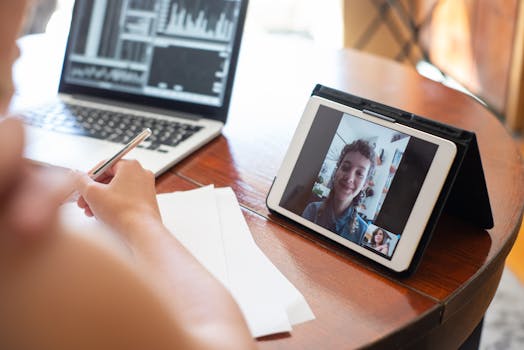
Imagine a fully functional PC that fits in your pocket. We're diving deep into the concept of an ultra-portable, yet powerful, tiny PC and exploring what it would take to make this dream a reality, from hardware limitations to software optimizations.
Tiny PC Dream: The Ultimate Pocket-Sized Powerhouse?
Imagine a fully functional PC that fits in your pocket. We're diving deep into the concept of an ultra-portable, yet powerful, tiny PC and exploring what it would take to make this dream a reality, from hardware limitations to software optimizations.
Introduction
The quest for miniaturization in technology is never-ending. We've seen smartphones evolve into powerful computing devices, but what about a dedicated PC in an even smaller form factor? The idea of a truly tiny PC, capable of running desktop applications and handling demanding tasks, is incredibly appealing. This article explores the feasibility of such a device, the challenges involved, and the potential benefits it could offer.
The Allure of a Pocket PC
Why are we so fascinated by the idea of a tiny PC? Several factors contribute to its appeal:
- Portability: The most obvious advantage is its unparalleled portability. Imagine having the power of a desktop PC in your pocket, ready to be connected to any display and peripherals.
- Versatility: A tiny PC could serve as a primary workstation for users who value mobility, a secondary device for specific tasks, or even a media center for home entertainment.
- Innovation: The development of a truly capable tiny PC would push the boundaries of hardware and software engineering, leading to advancements that could benefit other areas of technology.
Hardware Hurdles
Creating a tiny PC that's both powerful and practical presents significant hardware challenges:
Processor Power in a Small Package
The processor is the heart of any PC, and its power consumption and heat generation are critical considerations for a tiny device. We need a CPU that offers sufficient performance without overheating or draining the battery too quickly. Options include:
- Low-power Intel Core series: These processors offer a good balance of performance and efficiency, but they might still require active cooling in such a small form factor.
- AMD Ryzen Embedded series: Similar to Intel, AMD offers embedded processors designed for compact devices.
- ARM-based processors: The same type of processors found in smartphones and tablets, offering excellent power efficiency but potentially requiring software optimization for desktop applications. Apple's M-series chips are a great example of ARM's potential.
Memory and Storage Constraints
Even with advancements in memory and storage technology, fitting sufficient RAM and storage into a tiny PC remains a challenge. Solutions include:
- LPDDR RAM: This type of RAM is designed for low-power devices and offers a smaller footprint than traditional DDR RAM.
- NVMe SSDs: These solid-state drives offer high performance and are available in compact form factors like M.2.
- Cloud storage: Relying on cloud storage can reduce the need for large internal storage, but it requires a reliable internet connection.
Power Management and Cooling
Effective power management and cooling are crucial for a tiny PC to operate reliably and efficiently. Strategies include:
- Advanced power management: Optimizing power consumption at the hardware and software levels can significantly extend battery life.
- Passive cooling: Using heat sinks and thermal pads to dissipate heat without the need for fans can reduce noise and power consumption, but it may limit performance.
- Active cooling: Miniature fans or liquid cooling systems can provide more effective cooling, but they add complexity and power consumption.
Example: Consider a tiny PC using an Intel Core i5-1135G7 processor, 16GB of LPDDR4 RAM, and a 512GB NVMe SSD. This configuration would offer a good balance of performance and portability, but it would require careful thermal management to prevent overheating.
Software Optimization
Hardware is only half the battle. Software optimization is equally important for a tiny PC to deliver a smooth and responsive user experience.
Operating System Considerations
The choice of operating system can significantly impact performance and battery life. Options include:
- Windows 11: The most widely used desktop operating system, offering broad compatibility with applications and peripherals. However, it can be resource-intensive.
- Linux: A lightweight and customizable operating system that can be optimized for specific hardware and software configurations. Distributions like Ubuntu and Fedora offer a user-friendly experience.
- ChromeOS: A cloud-based operating system that's designed for web browsing and light productivity tasks. It's very lightweight and secure.
Application Optimization
Many desktop applications are designed for larger screens and more powerful hardware. Optimizing applications for a tiny PC can improve performance and usability.
- Lightweight alternatives: Using lightweight applications instead of resource-intensive ones can significantly improve performance.
- Cloud-based applications: Relying on cloud-based applications can reduce the load on the local hardware.
- Custom interfaces: Developing custom interfaces tailored for small screens can improve usability.
Tip: When using a tiny PC, prioritize applications that are designed for efficiency. For example, use a lightweight text editor instead of a full-fledged word processor for simple tasks.
The Future of Tiny PCs
The technology for creating a truly capable tiny PC is rapidly evolving. As processors become more powerful and efficient, memory and storage become more compact, and software becomes more optimized, the dream of a pocket-sized powerhouse is becoming increasingly realistic. We can expect to see further advancements in this area in the coming years, leading to even smaller, more powerful, and more versatile devices.
Conclusion
The concept of a tiny PC is more than just a novelty; it represents a paradigm shift in how we think about computing. By combining cutting-edge hardware and software, we can create devices that are both incredibly portable and surprisingly powerful. While challenges remain, the potential benefits of a tiny PC are undeniable, and its future looks bright.
